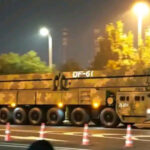Australian additive manufacturing company AML3D has secured a significant A$4.5 million (approx. US$2.96 million) contract to supply customized ARCEMY metal 3D printing systems to a major U.S. defense contractor. The deal highlights the growing role of wire arc additive manufacturing (WAAM) in bolstering sovereign industrial capability and agile sustainment within the U.S. Department of Defense (DoD) supply chain.
Contract Details and Strategic Importance
The order covers two large-scale custom ARCEMY X-Edition 6700 systems tailored for integration into U.S.-based advanced manufacturing hubs supporting the DoD’s modernization and sustainment priorities. According to AML3D’s ASX announcement on June 24, 2024, delivery is expected within approximately nine months.
The unnamed U.S. defense customer is described as a “Tier 1” contractor operating across shipbuilding and sustainment domains—likely aligned with the U.S. Navy’s push for distributed maritime industrial capacity and digital shipyard transformation under initiatives like NAVSEA’s Additive Manufacturing Center of Excellence (AM CoE).
This latest contract builds upon earlier orders from the same customer in July and October 2023 for smaller-scale ARCEMY systems used in evaluation trials at military-industrial facilities in Florida and Virginia.
ARCEMY System Capabilities
ARCEMY is AML3D’s proprietary wire arc additive manufacturing platform based on WAAM—a form of directed energy deposition (DED) using an electric arc to melt wire feedstock layer-by-layer into near-net-shape components. The process supports high-deposition rates (up to several kg/hr), making it well-suited for large-format parts such as naval structural components or aerospace tooling.
The X-Edition 6700 variant features:
- Build envelope exceeding 1 m³
- Multi-axis robotic arm integration
- Closed-loop process control via AMLSoft software suite
- Compatibility with titanium, aluminum, nickel alloys, and high-strength steels
This makes it ideal for producing certified structural parts on-demand in forward-deployed or austere environments—a key enabler of expeditionary logistics concepts like the U.S. Marine Corps’ Force Design 2030 or Navy’s Distributed Maritime Operations doctrine.
AUKUS Pillar II Relevance and Industrial Base Implications
The deal aligns with strategic objectives under AUKUS Pillar II—focused on integrating advanced capabilities such as AI, quantum tech, cyber resilience, and autonomous systems across allied defense ecosystems.
Additive manufacturing is explicitly prioritized under this pillar as a means to enhance supply chain resilience by enabling localized production of critical components—particularly relevant amid increasing tensions in the Indo-Pacific region.
AML3D CEO Sean Ebert noted that this order “further validates our strategy of embedding ARCEMY systems within the U.S. defense industrial base,” positioning the company as a key enabler of sovereign manufacturing capability aligned with both Australian Defence Force (ADF) modernization goals and allied interoperability frameworks.
Past Deployments and Qualification Pathways
In addition to its growing U.S. footprint, AML3D has also delivered ARCEMY units to Australian Navy programs—including trials involving titanium pressure hull components for Collins-class submarine sustainment efforts via ASC Pty Ltd.
The company is pursuing qualification pathways through Lloyd’s Register and DNV GL certification schemes—essential steps toward full adoption within naval platforms where material traceability and fatigue performance are paramount.
Notably, AML3D has also partnered with Boeing since early 2021 on aerospace-grade aluminum alloy development using WAAM processes—indicating cross-sector applicability beyond maritime domains alone.
Additive Manufacturing Trends in Defense Sustainment
This contract reflects broader trends across NATO-aligned militaries embracing additive manufacturing not just for prototyping but increasingly for certified end-use parts—especially amid global MRO backlogs exacerbated by COVID-era supply shocks and geopolitical disruptions.
The DoD has invested heavily in AM infrastructure through entities like America Makes and service-specific innovation cells such as Army DEVCOM Ground Vehicle Systems Center (GVSC) or Air Force Rapid Sustainment Office (RSO). Use cases range from cold spray repair techniques on F-16 radomes to WAAM-based production of submarine piping manifolds at Norfolk Naval Shipyard.
Key advantages driving adoption include:
- Dramatic lead time reduction vs traditional casting/forging
- Simplified inventory via digital part libraries (“digital twins”)
- Reduced lifecycle cost through just-in-time part production
Outlook: Scaling Sovereign AM Capability Across Allied Forces
This latest milestone cements AML3D’s position as an emerging supplier of deployable AM solutions tailored for defense applications requiring ruggedization, certification pathways, and integration into legacy logistics pipelines.
If successful at scale within this Tier-1 contractor’s ecosystem—and pending further validation—the ARCEMY platform could see broader rollout across U.S., Australian, UK naval depots or even forward-operating bases under joint logistics command structures envisioned by AUKUS planners.
The company continues to explore further contracts under its existing Cooperative Research Centre Projects (CRC-P) grant framework with Australian government support aimed at accelerating sovereign industrial capability development through dual-use technologies like advanced welding robotics and AI-driven quality assurance modules embedded into AM workflows.










